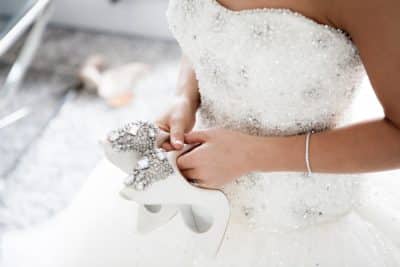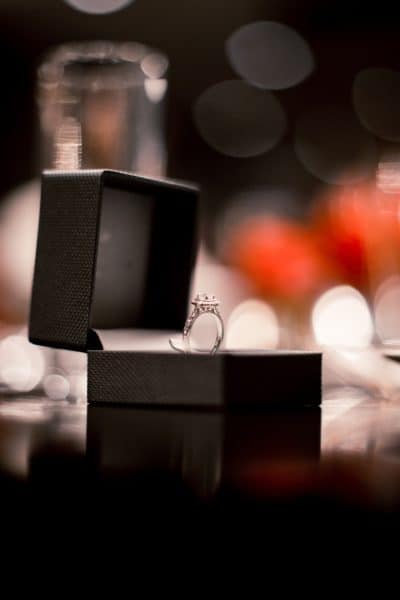Are diamonds a girl’s best friend? Well, they’re everyone’s best friend! Diamonds are synonymous with luxury, as are sports cars and mansions. This is why they’re used for only the finest jewelry. When shopping for diamonds, there are certain diamond facts you should know, such as the carat.
Carats are the system of measurement used for diamonds. Worldwide diamond reserves are estimated to hold 1.2 billion carats! What else about diamond carats should you know? Does carat impact the quality and price of the diamond? Here are 5 diamond carat facts that many people don’t know.
IMAGE: PEXELS
Carat Measures The Weight, Not Size
A common misconception is what the carat actually measures. It measures the weight of the diamond, but many people think it measures the size. Carats are represented as decimals, i.e. 1.23 ct. One carat is equal to 200 milligrams. Not only that but each carat is divided into 100 “points.” This ensures there’s accuracy in the measurements. That’s why you’ll hear jewelers also using the term “points.”
For example, a jeweler may say a 0.50 ct diamond is also a “fifty pointer.” In addition, “carat” is shortened to “ct.” While carat isn’t the only factor that determines the price, which we will cover later, you can save money by knowing the carat weight to choose. You can buy a diamond under a whole or even half a carat, saving as much as 25%.
Diamonds Can Vary In Size For The Same Carat
Just because two diamonds are the same carat doesn’t mean they will be the same size. That’s because the cut is a defining aspect of the diamond’s size and quality. Some shapes, such as pear and oval, are more elongated than a round diamond.
This makes the diamond look bigger. Certain cuts can also influence the width of a diamond. Something else that buyers may notice is two diamonds of the same carat AND the same shape may still be different sizes.
This happens when the proportions of a diamond’s facets are different. The facets are the small polished surfaces that we see on a diamond. These facets are expertly shaped to enhance a diamond’s sparkle and shine. The facets and the proportions between them also impact cut quality, which may increase the price.
Total Carat Weight And Carat Weight Aren’t the Same Thing
Another confusing factor when shopping for a diamond is the carat weight vs. total carat weight. These are terms that come up when you’re shopping for a piece that has multiple diamonds. Carat weight is the weight of a single diamond. For example, if you’re buying a solitaire diamond ring, the carat is the weight of that single diamond. But let’s say you’re buying a necklace that has multiple diamonds.
The total carat weight (often abbreviated as tcw.) is the weight of all diamonds combined, not just a single diamond. You’ll also see single diamond carats when shopping for a piece with multiple diamonds.
For example, the jeweler may say a ring with a halo of diamonds has a tcw. of 1.50 carats of each individual diamond may have 0.15 carats. If you’re buying a specific piece, such as any jewelry piece that has a halo of diamonds or side stones, you’ll want to keep the difference between these two terms in mind.
Bigger Doesn’t Always Mean Better
Diamonds with the biggest carats must be the best, right? Not exactly. This actually boils down to the individual’s preference. While diamonds with larger carats are usually more valuable, they also make a statement. Some women prefer average-sized or even smaller diamonds. These women are ones who don’t like the flashy look and would rather wear a diamond that’s subtler yet luxurious.
This is why small diamonds are a serious trend right now. What if you’re buying a diamond for your loved one, but aren’t sure which one they will prefer? This is where the Golden Ratio comes in. When the ratio between finger width and diamond width is closer to the Golden ratio, it will achieve a harmonious aesthetic look.
Take a 1.5-carat diamond ring as an example, it’s an attractive carat weight but isn’t overbearing. It can combine the size of a 2-carat stone with the money-saving ability of a 1-carat stone. If this sounds like what your partner would like, consider a diamond around this carat weight.
Carat Isn’t The Only Factor That Determines Price
While carat is a big indicator of price, it’s not the only one. That’s why we must consider the other three Cs:
- Cut
- Color
- Clarity
As we’ve been stating, the cut reflects not only the shape but also the cut quality. It’s arguably the most significant factor that affects a diamond’s price. Gem cutters shape a diamond to ensure it’s symmetrical, well-proportioned, and polished.
Color is also essential. Diamonds are naturally colorless, though they may develop a yellowish tint. This tint is caused by quality issues and anything else that signals an impure diamond. Diamonds are also graded based on their color, a scale that goes from D to Z.
While most diamonds are colorless, many diamonds still have imperfections. These imperfections take away a diamond’s luster. There are two different types of imperfections: inclusions and blemishes. Inclusions impact the interior of the diamond, whereas blemishes impact the diamond’s surface.
Should you only choose the highest grade diamonds on all the 4Cs? Not exactly. If the diamond has exceptional brilliance when looking at it with your naked eyes, it’s more than likely okay. This way, you’ll save money while getting a beautiful diamond.
Buy The Most Perfect Diamond Today
Diamond carat is one of the most misunderstood aspects when buying diamonds. But now that you know what the carat is, you’re one step closer to choosing the right diamond.
If you are interested in even more lifestyle-related articles and information from us here at Bit Rebels, then we have a lot to choose from.


COMMENTS